“No one born in Provence can live without the scents of the garrigue scrubland, the gusting Mistral, the sun’s caress and the magic of the olive trees that shaped the local landscape.”
–Catherine and Jean-Benoît Hugues, CastelaS, Baux de Provence
Jean-Benoît Hugues’ admiration and deep respect for the centuries-old olive trees in Provence, France turned into a growing crush and–like the formidable and notorious Mistral winter wind that howls and whips through that region–the crush persisted until Jean-Benoît and his wife Catherine heeded the beckoning and made a huge life change.
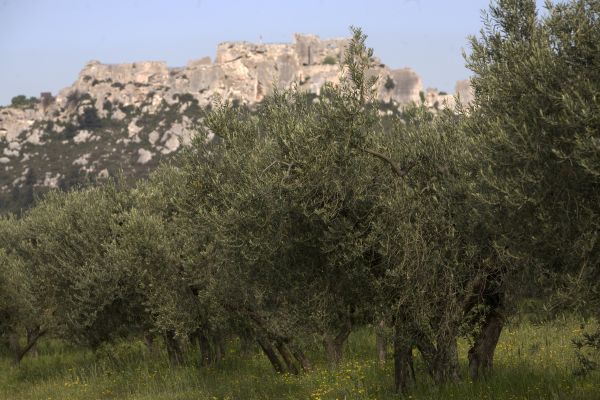 The year was 1998, and at the time, they were living in Arizona, USA where the couple raised their young children and Jean-Benoît worked as an engineer specializing in semiconductor manufacturing. Both were born in Southern France (he grew up on an apple tree farm and her parents are the founders of a well-known winery in Châteauneuf-du-Pap), but they had spent the last 15 years in the United States.
The year was 1998, and at the time, they were living in Arizona, USA where the couple raised their young children and Jean-Benoît worked as an engineer specializing in semiconductor manufacturing. Both were born in Southern France (he grew up on an apple tree farm and her parents are the founders of a well-known winery in Châteauneuf-du-Pap), but they had spent the last 15 years in the United States.
Jean-Benoît partnered with an associate and their business expanded into a major actor in the chip industry with customers around the world. When his partner decided to retire, they sold their company to a notable equipment manufacturing company based in Montana. Jean-Benoît was asked to manage one of the divisions. He assembled a team and doubled their sales in less than one year. It was the quintessential success story.
“Yes, the American Dream exists!” Jean-Benoît says. “[But] staying on the ‘fast lane’ was starting to take its toll. I had neglected my family life all of those years.”
He adds, “Catherine’s parents were getting old and we decided to take our two French/American kids to live close to their grandparents and cousins. We believe that family ties are among the best tutors for raising young children.”
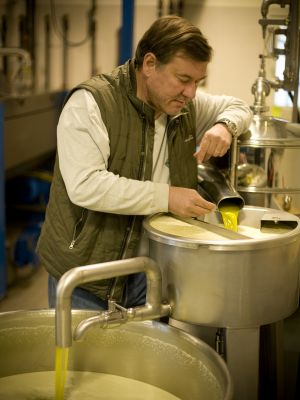 So, they answered the calling and moved from the vast desert plains of Arizona to the locality of Les Baux de Provence, founded Domain CastelaS and set about creating their unparalleled brand of olive oils, CastelineS. Les Baux is a small village that sits atop a crop of rocks, its namesake a castle ruin from the French Revolution. Surrounding Castelas is the region’s garrigue, the wild shrubland of juniper, thyme and lavender sprawling the limestone hills. And of course, the olive trees, referenced in the land’s deed, written on parchment paper and dating back to 1770.
So, they answered the calling and moved from the vast desert plains of Arizona to the locality of Les Baux de Provence, founded Domain CastelaS and set about creating their unparalleled brand of olive oils, CastelineS. Les Baux is a small village that sits atop a crop of rocks, its namesake a castle ruin from the French Revolution. Surrounding Castelas is the region’s garrigue, the wild shrubland of juniper, thyme and lavender sprawling the limestone hills. And of course, the olive trees, referenced in the land’s deed, written on parchment paper and dating back to 1770.
The couple let the land and the act of farming–hard work but so different from the industrial grind of their last couple of decades–begin to revive and restore them. They “[Catherine and I] both have that farming background and attraction to growing things,” says Jean-Benoît. “The decision to acquire some olive trees was easy [but] producing and selling good olive oil would prove to be a challenge.”
Growing, harvesting, milling, and producing a high-quality olive oil is indeed a process full of challenges. How do you make an oil that tastes like pure, freshly crushed olives? While the process is simple in some ways, it is equally technical and complicated in other ways. Jean-Benoît’s philosophy is olive oil production commands as little intervention as possible with scientific proficiency and modern, high-grade equipment.
Although a farming engineer or an engineering farmer may sound like a paradox, that is precisely what Jean-Benoît is. And it’s precisely what makes him so well-suited to growing olives and producing distinctive and exceptional olive oil. He can harness and utilize the strengths from both roles, integrating his technical savvy with his farming knowledge, the latter a role that often requires less intervention and more nurturing. He calls it being a “steward of the landscape;” a caretaker who tends to the land with minimal intervention or manipulation and lets nature do what it’s designed to do.
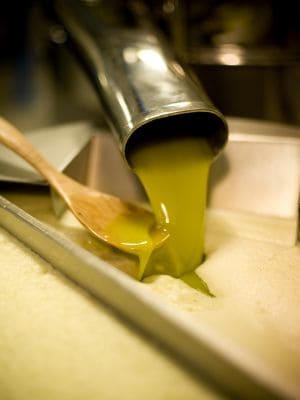 For example, at CastelaS there is no manmade irrigation; instead a stone canal on the property built in the 1800s provides water for the groves–a unique system for the region and one that other farmers have adapted. In addition, to maintain soil quality and PDO status, the olive trees at CastelaS are planted with at least 300 square feet per tree, unlike many neighboring farms which practice “super high-density farming” with trees so close together that within 10 years the soil will be depleted, and the trees will have to be pulled from the ground and replanted.
For example, at CastelaS there is no manmade irrigation; instead a stone canal on the property built in the 1800s provides water for the groves–a unique system for the region and one that other farmers have adapted. In addition, to maintain soil quality and PDO status, the olive trees at CastelaS are planted with at least 300 square feet per tree, unlike many neighboring farms which practice “super high-density farming” with trees so close together that within 10 years the soil will be depleted, and the trees will have to be pulled from the ground and replanted.
Jean-Benoît talks about pulling back on interference during the oil extraction process. “Since an olive oil is akin to a fruit juice, the human intervention to extract it can only but degrade that juice,” he says. “The goal in thriving to optimize the quality of an olive oil is to minimize the degradation we introduce during that extraction process. My engineering background has helped me to remove the degrading steps of that process.”
And, of course, having a closed-circuit system where no stage of growing or production is outsourced allows for the reduction of human interference. CastelaS has its own mill and Jean-Benoît developed several systems to reduce interference and degradation. For example, at CastelaS they use a slow speed grinder that crushes the olives without raising the temperature, enclose olive paste kneaders to minimize oxidation, and employ waterless centrifuge to keep the healthy polyphenols in the olive oil intact.
In conjunction with these modern equipment implementations, it’s essential to conserve authentic practices. “At the same time, we kept the traditional local cultivars, moved to organic farming and developed an understanding of the olive ripening process in order to harvest at the optimum time,” says Jean-Benoît.
Another preserved tradition at CastelaS is lieu-dit, literally “place called,” or locale, a custom in which farmers name their plots. Jean-Benoît says, “[We] grew up with such singsong names…often strange and hard to spell as ‘Les Grandes Drailles’ and ‘Joncades Basses’ for [me] while names like ‘Galéant’ and ‘Les Pétarelles’ filled Catherine’s childhood.”
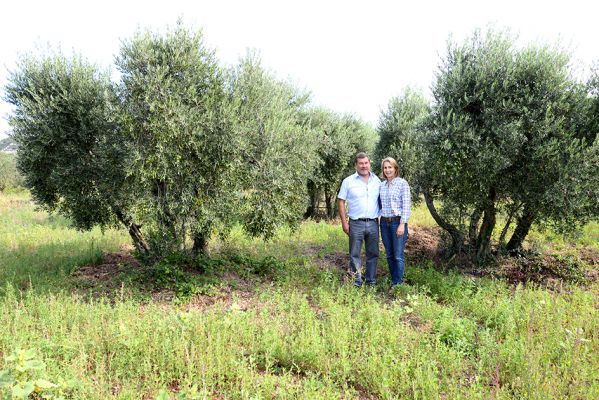 At CastelaS, evoking the nostalgic traditions of Jean-Benoît and Catherine’s early lives, their groves bear such melodic names as Roméro, Mas de Flore, Plaines de Geymon, Beaumettes Hautes, and Les Baux, home to the equally lyrical-sounding olive varieties grown there: Salonenque, Aglandau, Grossane and Verdale.
At CastelaS, evoking the nostalgic traditions of Jean-Benoît and Catherine’s early lives, their groves bear such melodic names as Roméro, Mas de Flore, Plaines de Geymon, Beaumettes Hautes, and Les Baux, home to the equally lyrical-sounding olive varieties grown there: Salonenque, Aglandau, Grossane and Verdale.
And, so, here we arrive at the literal fruits of the Hugues’ labor.
CastelaS produces two main families of olive oils. The CastelineS extra virgin olive oils pressed within 6 hours of harvest hold the green and fruity notes characteristic of a freshly pressed olive oil. Their CastelineS Classic, which has won several awards including Gold at 2018 New York International Olive Oil Competition, is a blend of all four varieties. It is complex and harmonious with notes of artichoke, almond, and a well-balanced pepperiness – perfect for seafood vegetables and poultry. The L’Aglandau, also winning 2017 and 2018 Gold at NYIOOC, is 100% Aglandau: elegant, grassy, and well-suited to drizzle on cheeses such as Roquefort and goat cheese. CastelaS produces several other virgin and extra virgin olive oils including aromatic oils such as Citron, Basil and Mint, Rosemary and Thyme, and Garlic. The Corsica Citron, the Garlic from a village in Vaucluse where 2,000 tong of garlic is produced every year, and the local herbs sourced from the garrigue surrounding CastelaS are all blended at the beginning of the process rather than infused post-production, lending an integrated and deep flavor.
The second type of olive oil made at CastelaS is CastelineS Noir d’Olive. This is a traditional Provencal oil produced with a process called coufi, which was most likely developed out of necessity as it would take family growers several days to harvest enough olives to be worthy of a trip to the communal press. The olives amassed in large piles, causing the olives at the center of the pile to go through anaerobic fermentation resulting in an oil with that tapenade flavor–or Fruite Noir–so unique in flavor that many classic Provencal dishes were created with the oil in mind. But as olive farms had access to quicker pressings, or had their own mills such as at CastelaS, the olives could be picked and pressed within hours.
“That drive to obtain the best green, fruity [and] grassy [flavor] eliminated an ancient practice which was to let the olive stay in the attic to ripen,” says Jean-Benoît.
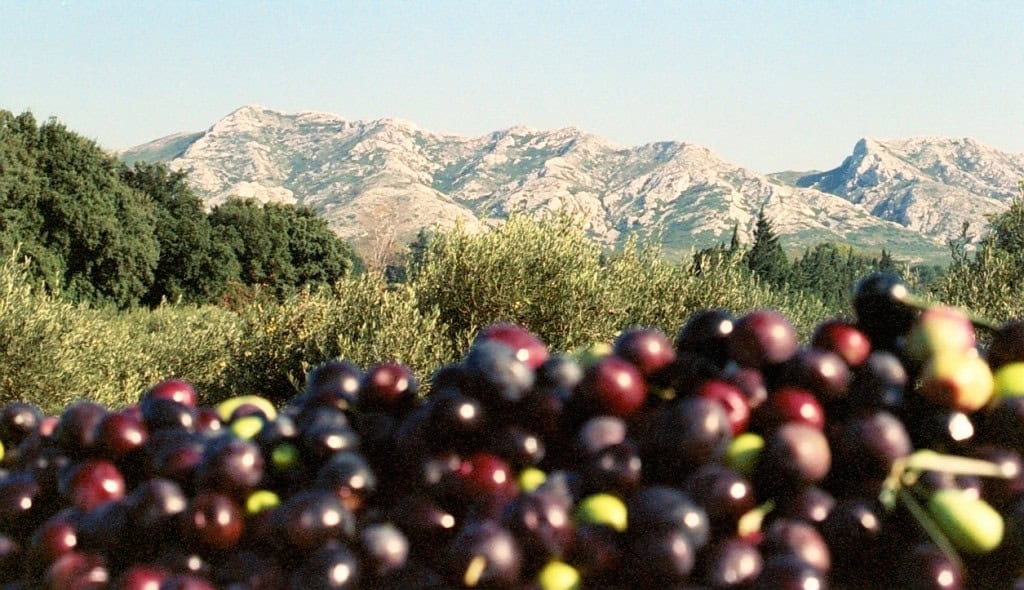 The quality and flavor profile of Fruite Noir olive oils can be highly variable without an exact process: sometimes resulting in an elegant, refined flavor, but just as often producing a defective oil, musty or even rancid. “But, as with many food defects, one can find qualities in some of these perceived defects,” says Jean-Benoît. He lists sweet wines, blue cheese, and vinegars as foods with such “defects” that also have desired, and intentional, flavors.
The quality and flavor profile of Fruite Noir olive oils can be highly variable without an exact process: sometimes resulting in an elegant, refined flavor, but just as often producing a defective oil, musty or even rancid. “But, as with many food defects, one can find qualities in some of these perceived defects,” says Jean-Benoît. He lists sweet wines, blue cheese, and vinegars as foods with such “defects” that also have desired, and intentional, flavors.
How could this traditional Fruite Noir oil be made in a way that consistently yields the desired flavors while eliminating the unpredictable and unpleasant ones? In other words, how could Jean-Benoît achieve only technically correct “defects?” And how could he preserve and safeguard the Provence tradition when European regulation considered all traces of fermentation a defect?
These are the questions Jean-Benoît asked and set out to revive an ancient tradition by picking fully mature olives of their four varieties and storing the ripe fruit in an oxygen free environment. Next, is the delicate, intentional and controlled task of fermentation to create the taste of preserved black olives without the undesired flavors.
The result is a black, fruity olive oil with its subtle flavors of cocoa and vanilla with a truffle finish, and an absence of bitterness or pungency. The uses seem nearly endless: it is well-suited to use cold in garlic-seasoned salads, for making mayonnaise, drizzling on confits, mushrooms, or mashed potatoes. And it’s not just for food: a drop or two is a flavor-bursting enhancement to a chilled, shaken martini. See our recipe for that here!
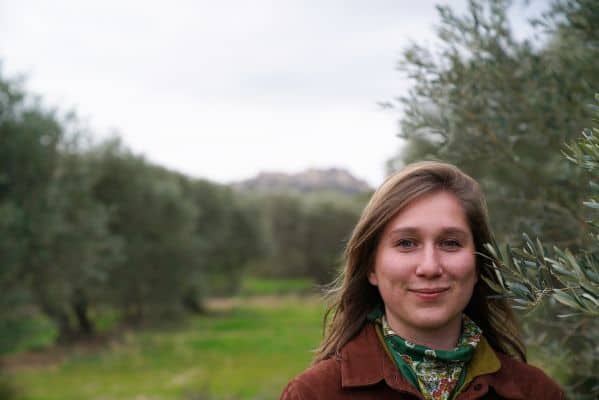
Over two decades have passed since that initial crush, and Jean-Benoît continues to merge his engineering skills with his farming knowledge to evolve his olive farm and olive oil production facility.
What’s next?
“It is time for us to think about the generations taking over after us,” says Jean-Benoît. “We have been lucky enough to realize some of our dream and our passion has helped us heal the stress caused by the first part of our adult life. However, this ‘hobby’ has uncovered a legitimate family business that is based on traditional local farming. We will keep pushing for what has made our success: transcending the production of traditional olive oils by understanding and improving what our centennial trees have to offer.”
Written by Leska Tomash
CASTELINES CLASSIC EXTRA VIRGIN OLIVE OIL – 500mL bottle or 3L box
CASTELINES L’AGLANDAU EXTRA VIRGIN OLIVE OIL – 500mL bottle
CASTELINES NOIR D’OLIVE VIRGIN OLIVE OIL – 500mL bottle or 3L box
CASTELINES OLIVE OIL WITH THYME AND ROSEMARY – 250mL bottle
CASTELINES OLIVE OIL WITH BASIL AND MINT – 250mL bottle